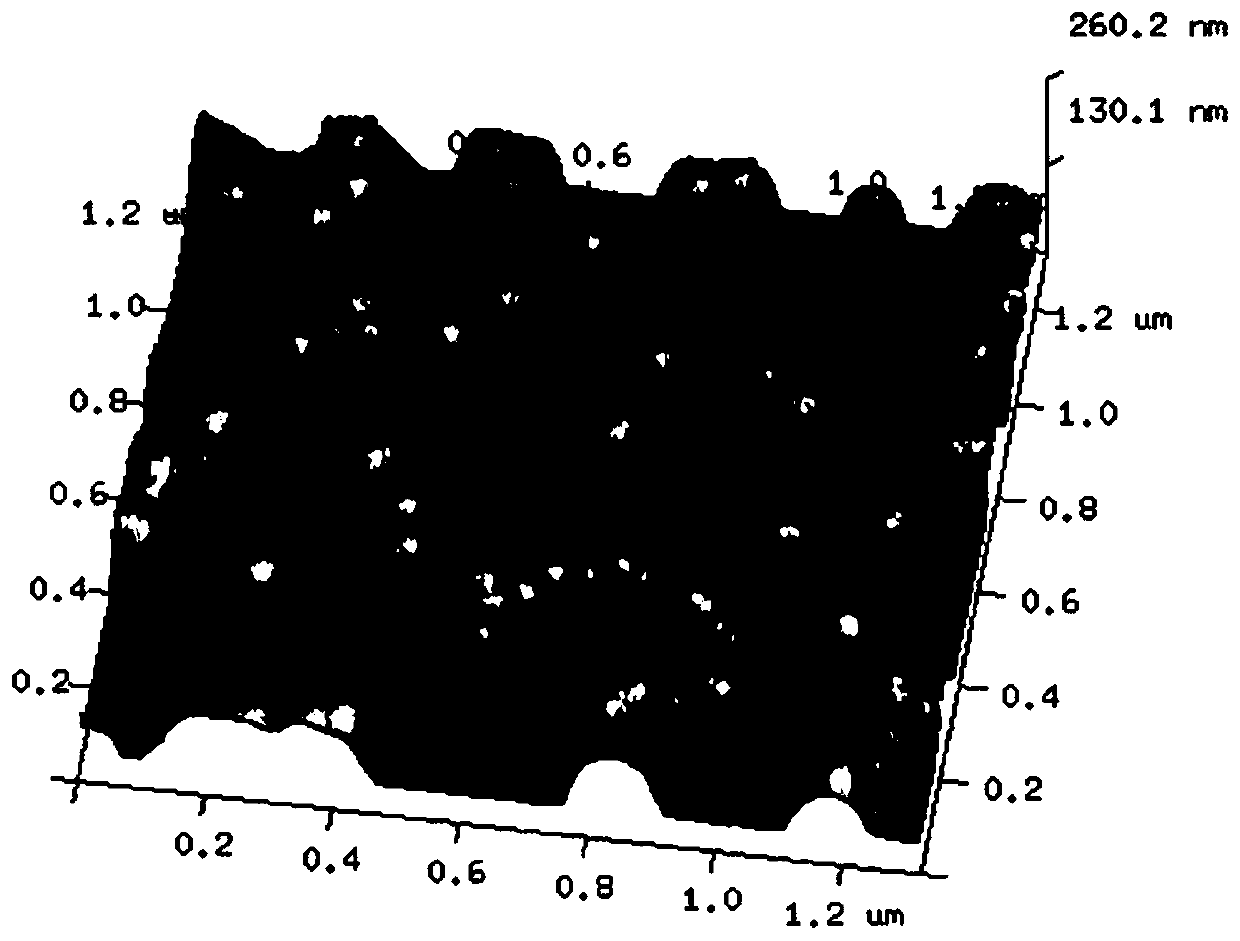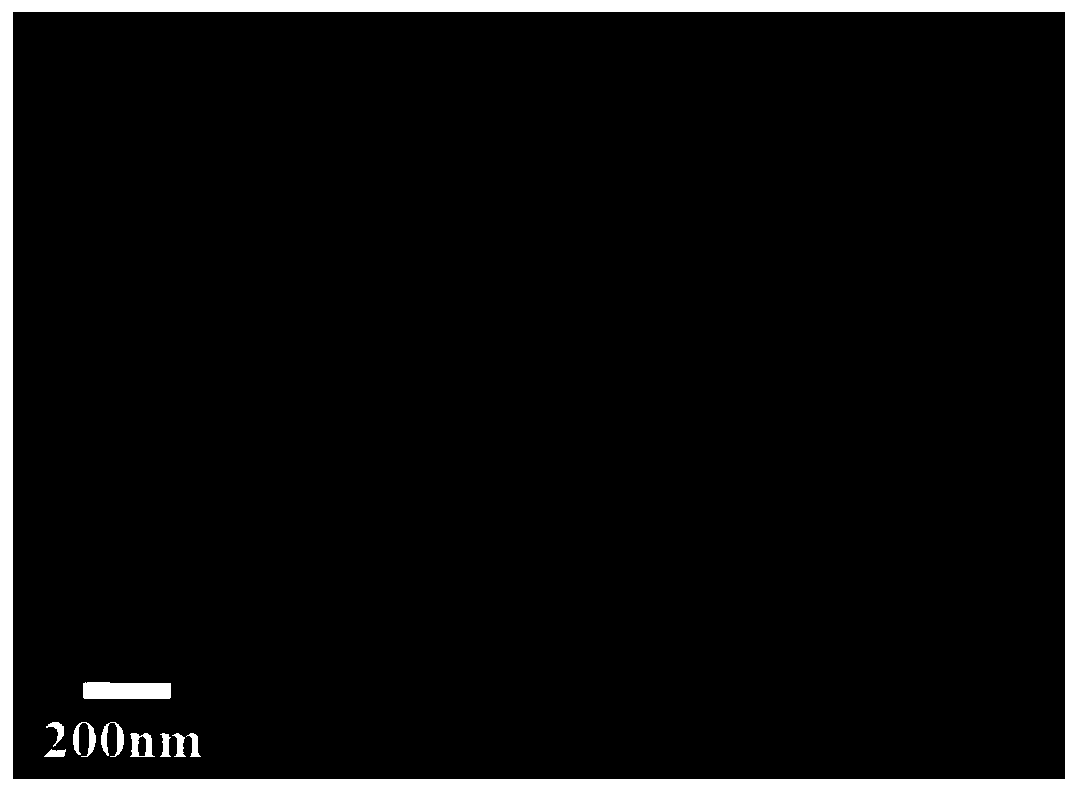Amino silicon phthalocyanine nano-sphere, method for preparing same and application of amino silicon phthalocyanine nano-sphere
A technology of nanospheres and silicon phthalocyanines, applied in nanotechnology, nano-optics, nanotechnology, etc., can solve problems such as single-component silicon phthalocyanine nanosphere drugs, and achieve good application prospects and good tumor suppression Function, beneficial to the effect of tissue penetration ability
- Summary
- Abstract
- Description
- Claims
- Application Information
AI Technical Summary
Problems solved by technology
Method used
Image
Examples
Embodiment 1
[0045] Example 1. Preparation of amino silicon phthalocyanine (n=1) nanoparticles
[0046] Dissolve amino silicon phthalocyanine (n = 1) with N,N-dimethylformamide into a 2mmol / L solution, take 3ml of mother liquor, and when the stirring speed is 100rpm, the mother liquor is injected at a rate of 0.6mL / min It was injected into 297 ml of deionized water to obtain 10 μmol / L amino silicon phthalocyanine nanosphere aqueous solution.
[0047] Experimental test of amino silicon phthalocyanine nanospheres obtained in Example 1:
[0048] 1. Singlet oxygen test
[0049] 1,3-Diphenylisobenzofuran was used as a quencher to test the ability of the sample to generate singlet oxygen. The light source is equipped with a 610nm cut-off filter (λ> 610nm) and 750nm filter (λ=750nm±10nm) 150W halogen lamp. Firstly, DPBF was prepared into an aqueous solution with a concentration of 40μM, and then 3mL of this solution was transferred to a quartz cuvette, and then the sample mother solution prepared with ...
Embodiment 2
[0057] Example 2: Taking amino silicon phthalocyanine n=2 as an example
[0058] As described in Example 1, the difference is that the amino silicon phthalocyanine (n = 1) in step (2) is replaced with an equimolar amount of n=2 amino silicon phthalocyanine, and the resulting product amino silicon phthalocyanine The cyanine nanospheres have a higher singlet oxygen production rate in deionized water after the singlet oxygen test. And it has a very good hyperthermia effect, rising to about 25°C within 5 minutes.
Embodiment 3
[0059] Example 3. Take amino silicon phthalocyanine n=3 as an example
[0060] As described in Example 1, the difference is that the aminosilicon phthalocyanine (n=1) in step (2) is replaced with an equimolar amount of n=3 aminosilicon phthalocyanine, and the resulting product aminosilicon phthalocyanine The cyanine nanospheres have a higher singlet oxygen production rate in deionized water after the singlet oxygen test. And it has a good hyperthermia effect, rising to about 23°C in 5 minutes.
PUM
| Property | Measurement | Unit |
|---|---|---|
| The average particle size | aaaaa | aaaaa |
Abstract
Description
Claims
Application Information
 Login to View More
Login to View More - R&D
- Intellectual Property
- Life Sciences
- Materials
- Tech Scout
- Unparalleled Data Quality
- Higher Quality Content
- 60% Fewer Hallucinations
Browse by: Latest US Patents, China's latest patents, Technical Efficacy Thesaurus, Application Domain, Technology Topic, Popular Technical Reports.
© 2025 PatSnap. All rights reserved.Legal|Privacy policy|Modern Slavery Act Transparency Statement|Sitemap|About US| Contact US: help@patsnap.com



